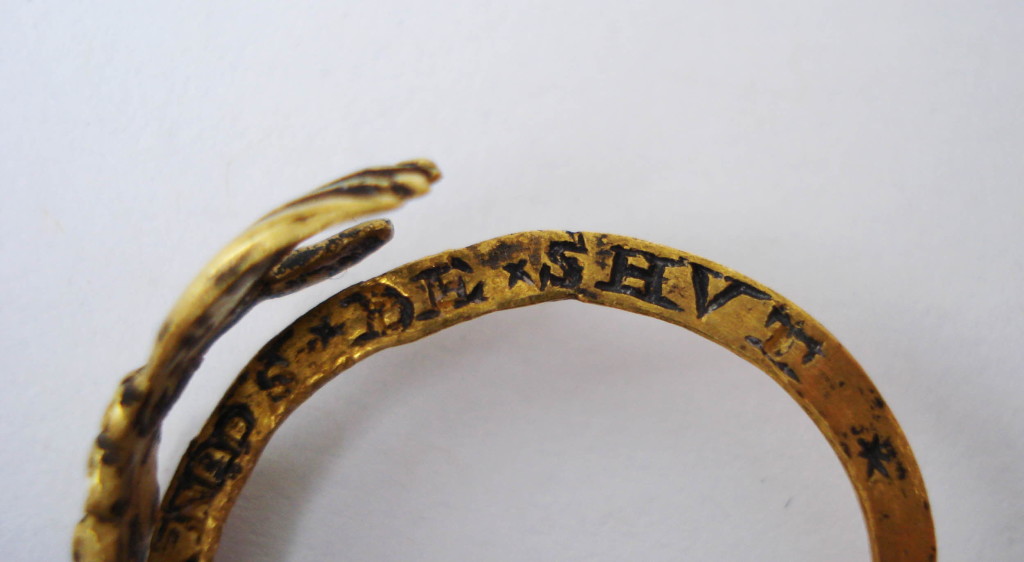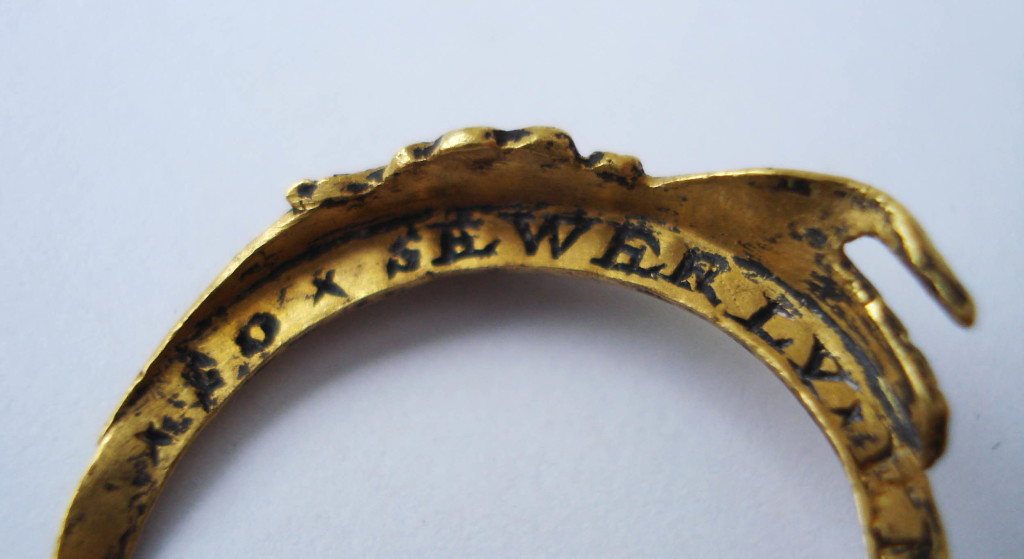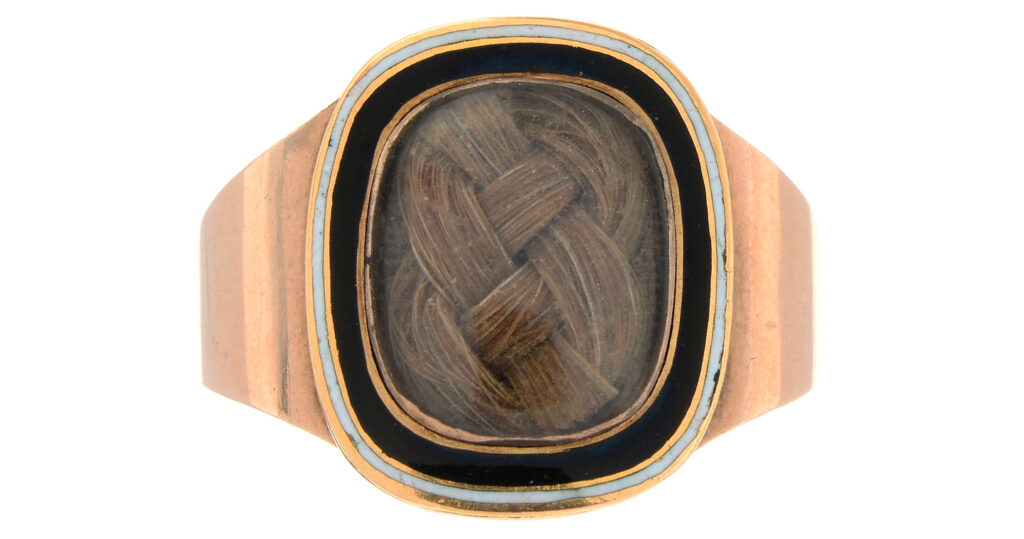Clasp Hands with an Early Gimmel Ring

A gold fede and gimmel ring consisting of two interlocking and twisted hoops with clasped hands forming the bezel. Within the lower hand is a heart and, when the two hoops are joined, the top hand clasps this heart. The hands extend to the shoulders, becoming cuffs and these are decorated and partly enamelled. On the inside of each hoop is an inscription that remains concealed when the two hoops are shut.
Clasping hands is a universal symbol of a union and trust. Personal connections are forged through the range of time spent together and physical connection, which are both symbols that are represented in mourning and sentimental jewels. Time, or ‘tempus fugit’, is often referenced as the hourglass, showing how time can fly. Physical proximity is perfectly captured in this fede ring, with the two clasped hands joining at the bezel.

A gold fede and gimmel ring showing hoop and hand detail.
Marriage after the Protestant Reformation involved the state, which meant that governments could create legislation surrounding marriage ritual. As seen in other articles regarding cultural ceremonies on this site, the moment a government can standardise a human rite around love and death, the greater control they can have on a society. Lord Hardwick’s Act in 1753 created requirements for marriage, such the introduction of witnesses into the ceremony, due to combatting ‘Fleet Marriage’. Fleet Marriage was when secret weddings took place and took its name from marriages held in London’s Fleet Prison, which was seen be to outside the jurisdiction of the church. This was to keep costs low and still retain a legal clergyman. Irregular and clandestine marriages were those away from a parish and without a license, not simply an agreement between two people to consent to marriage. The Marriage Act of 1753 ensured that banns (proclamations) needed to be published and a license obtained. The wedding needed to be officiated in an Anglican church by a clergyman and minors needed consent of parent or guardian. Quakers and those of the Jewish faith were exempt from this act.

A gold fede and gimmel ring showing interlocking hoops.
Hand symbolism was a motif that increased in popularity from the 15th to the 19th centuries, where it became one of the most recognisable Victorian sentiments. There are variations on the style, notably the fede rings that would be contemporary with the age of this ring. In Italian, known as ‘mani in fede’, or ‘hands in trust’, fede rings show a wonderful sentimental connection between two lovers.
A gimmel ring, however, takes its names from the Latin ‘gemellus’, meaning ‘twin’. This is due to the ring being formed of two interlocking hoops. The betrothed couple would each receive a hoop of the ring, which would interlock at the wedding ceremony, affirming their love and the union itself. Rings with more than two hoops are known as ‘puzzle rings’.

A gold fede and gimmel ring showing enamel and inscription.
The inscription reads ‘AS HANDS BE SHVT SO SEWERLY KNYT’. The suggestion is that this is a gimmel ring used to establish a marriage due to the two interlocking hoops and the unification of the fede elements. In the lower hand is a heart and the top hand, when clasped, holds the heart. The hands feature cuff decoration with signs of worn enamel, which is also carried through inside the inscription.
Love and identity are lifted into jewellery and accessories by being as direct and strong as possible. Hands, holding together, with a shared heart is an incredibly powerful sentiment and one that doesn’t require further insight for the viewer to acknowledge the love of others.






